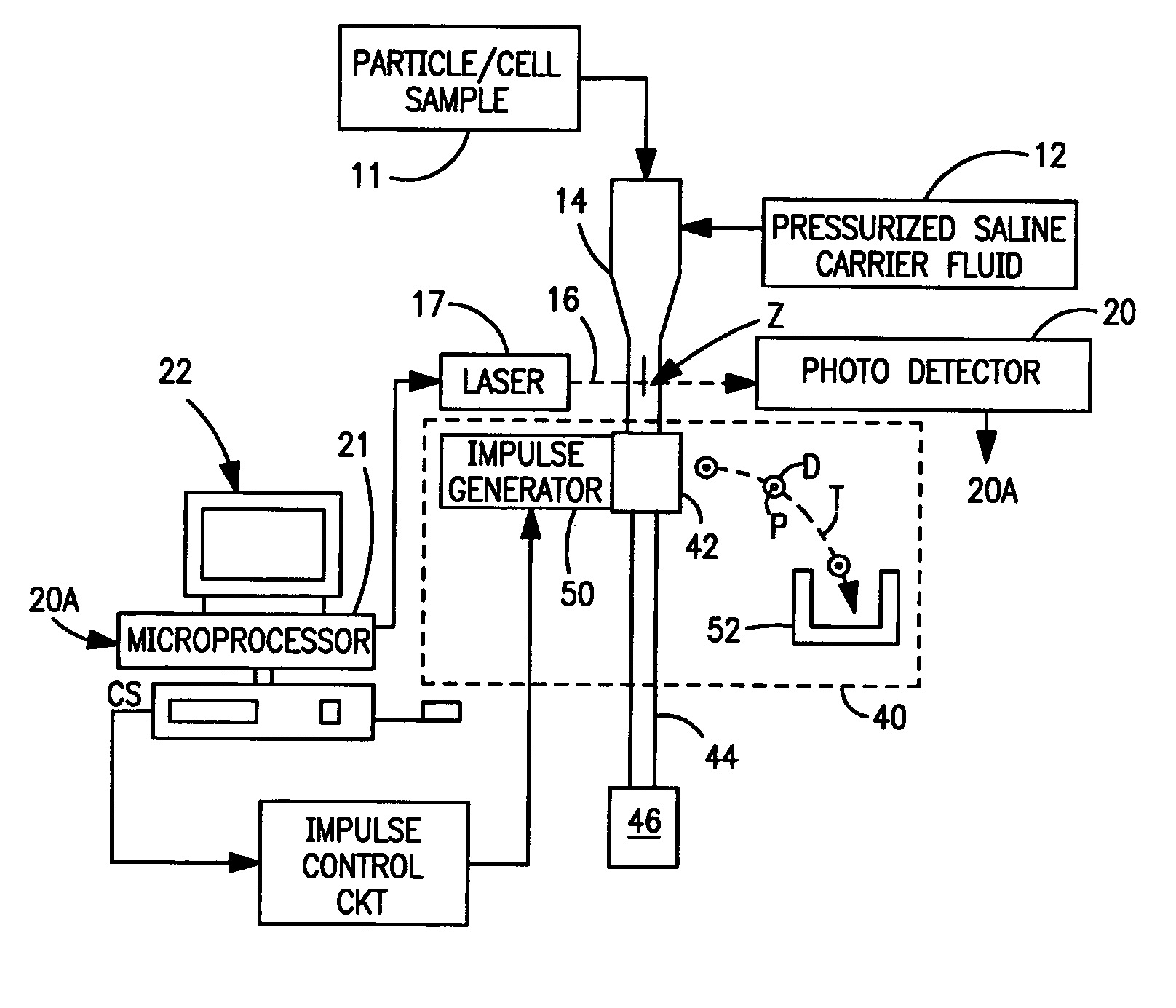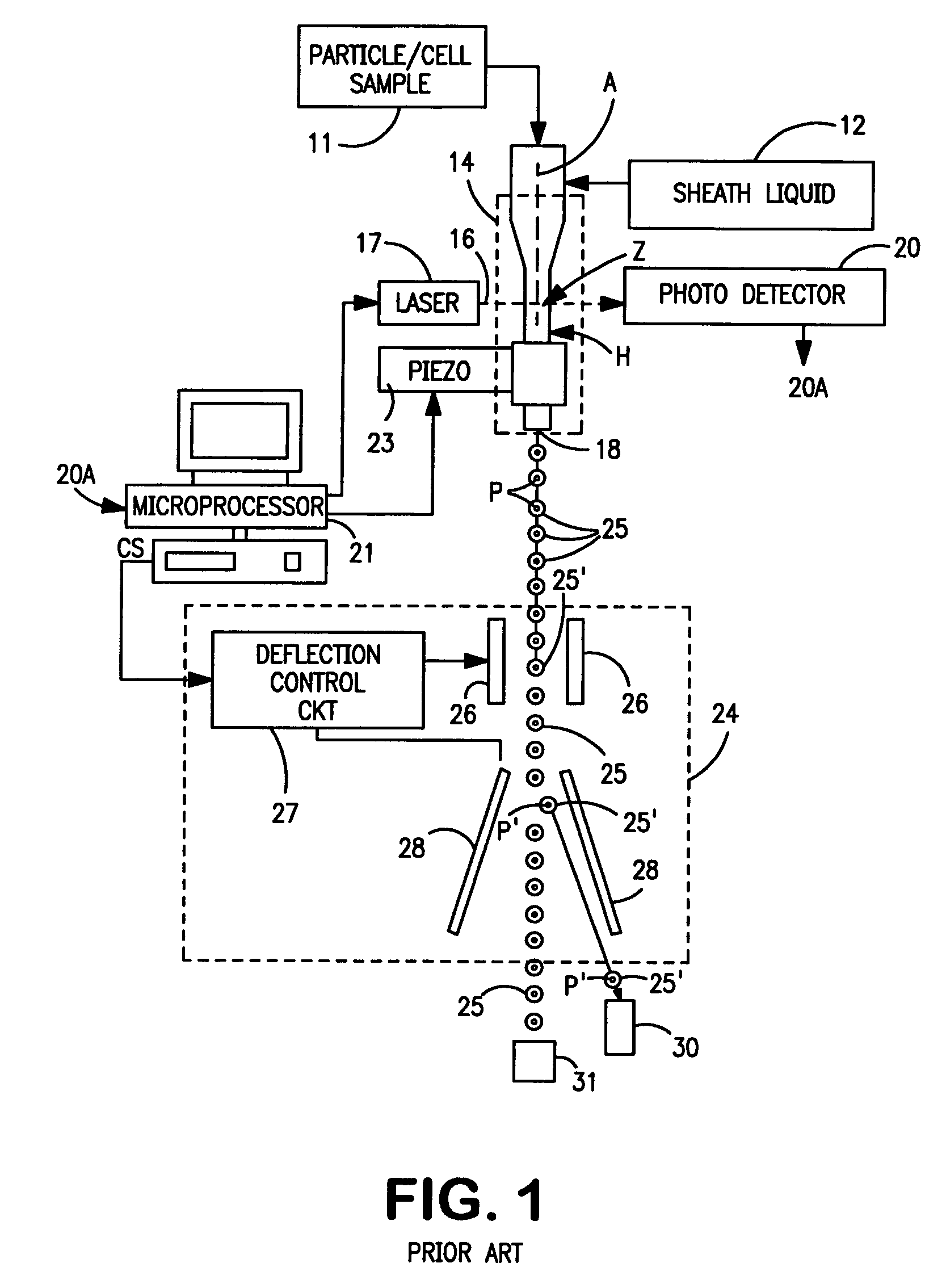Methods and apparatus for sorting particles hydraulically
a technology of hydraulic separation and particle separation, applied in the field of particle separation method, can solve the problems of difficulty in continuously producing droplets, difficulty in controlling the precise movement of droplets as they exit the flow cell, and difficulty in continuous production of droplets
- Summary
- Abstract
- Description
- Claims
- Application Information
AI Technical Summary
Benefits of technology
Problems solved by technology
Method used
Image
Examples
Embodiment Construction
[0017] Referring now to the drawings, FIG. 1 illustrates a conventional particle-sorting flow cytometer of the type described above. Briefly, particles to be analyzed and sorted, such as cells of a centrifuged blood sample stored in a container 1, are injected into a pressurized stream of sheath liquid e.g., saline) provided from a source 12. The sheath liquid concentrically surrounds the injected particles and causes the particles to travel along the central longitudinal axis A of an optical flow cell 14. The particles to be analyzed are introduced into the sheath fluid at a rate such that the particles are spaced apart and pass one-at-a-time through the flow cell as a substantially linear array of particles. The flow cell is fabricated from an optically transparent material, typically quartz. As each particle passes through the flow cell, it passes through an interrogation zone Z where it is irradiated by a beam of radiation 16, commonly provided by one or more continuous-wave las...
PUM
 Login to view more
Login to view more Abstract
Description
Claims
Application Information
 Login to view more
Login to view more - R&D Engineer
- R&D Manager
- IP Professional
- Industry Leading Data Capabilities
- Powerful AI technology
- Patent DNA Extraction
Browse by: Latest US Patents, China's latest patents, Technical Efficacy Thesaurus, Application Domain, Technology Topic.
© 2024 PatSnap. All rights reserved.Legal|Privacy policy|Modern Slavery Act Transparency Statement|Sitemap



